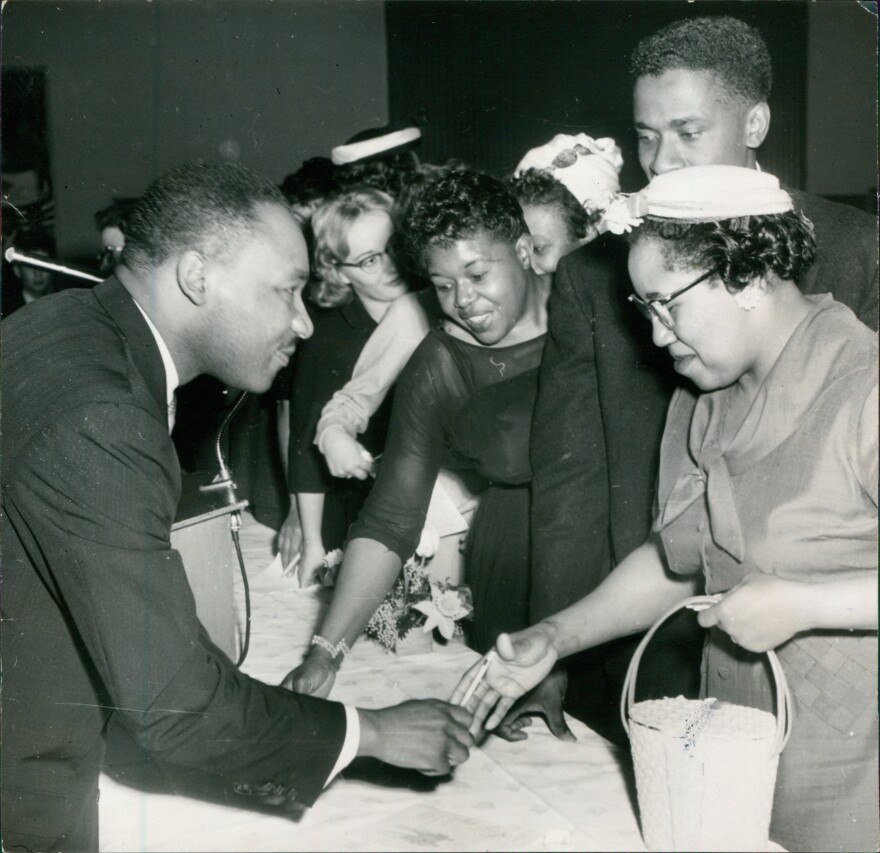The McLean County Museum of History is set to digitize more than 150,000 photographic negatives after receiving a $550,000 federal grant to continue a project begun more than 10 years ago.
Norris Porter, the museum's director of development, said, the museum is entering the second stage of the digitization project that began in 2012 after The Pantagraph newspaper gifted the museum a large collection of photographic negatives.
The grant is from the National Historical Publications and Records Commission [NHPRC].

Porter said the museum had worked with a grant issued from the Institute for Museums and Library Services [IMLS] in order to initiate the first phase of the project that saw the digitization of about 130,000 negatives of photos taken between 1930 and 1956.
“Digitization is more complex than scanning an image on a copy machine,” Porter said. “It is a time-consuming, expensive process.”
The museum sends the photographic negatives to Picturae, a digitization service that works with public and private institutions to make historical archives accessible for viewing purposes.

Speaking with WGLT, Porter said the museum worked to find how many photographs were available for digitization.
“My role in the digitization project was to research where we were at with the collection, working with our librarian, archivist and various other staff to figure out how many negatives we really had available,” Porter said. “What we believed to be a million ended up to be three million.”
Porter said the photos depict what Midwestern life was like from the time of the Great Depression through the end of the 20th century.
“There are pictures of a model-T car that went off the road and a bunch of people standing around it, three gentlemen milking a cow and a new kind of farm equipment that was recently released [at the time] and being used in the fields in McLean County,” Porter said. “It’s just a slice of Americana."

Since 2012, many photo negatives have been stored in a large walk-in freezer for preservation purposes.
“That’s where the negatives most in danger of oxidation and damage are stored at to prevent additional damage,” Porter said.
“We retrofitted another storage space with additional shelving, the right kinds of boxes to store the negatives that couldn’t be stored in the freezer and we also installed new HVAC equipment — which wasn’t cheap — to make sure the environment was such that those negatives would be taken care of.”
According to Porter, the museum is purchasing new technology, including servers, to help with uploading the photos to the Illinois Digital Archives, an online service that holds photographs and records from the Illinois State Library and other cultural organizations in the state.
Porter said the museum's servers, old and new, are being moved off-site due to a lack of space. “We live and work in a 1903 historical landmark building which is not conducive to technology,” Porter said.
Once fully digitized, the photographs will be available to view on the Illinois Digital Archives platform.
“Those are JPEG files that people can download,” said Porter, who shared some of the ways in which the museum's already-digitized photos have been used.
“We have people from England and different countries that have come in and have found these online [and] they want to come in and dig deeper into our collection of paper items,” Porter said. “They’ve been used in different kinds of publications, from railroad magazines to other kinds of publications — coffee table books [and] books on traveling.”
“It’s a rich history that’s pretty unique across the U.S. and for an institution our size, it’s definitely unique.”


